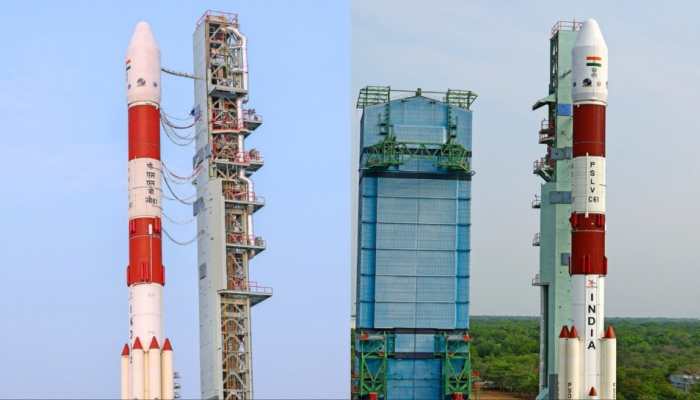ISRO's 101st Satellite Mission: Know Why PSLV-C61 Failed To Deploy EOS-09 Satellite From Sriharikota
ISRO's 101st satellite mission, EOS-09, launched aboard PSLV-C61, providing high-resolution Earth observation capabilities.
Trending Photos
) ISRO's 101st Satellite Mission: PSLV-C61 Launches EOS-09 (X/@isro)
ISRO's 101st Satellite Mission: PSLV-C61 Launches EOS-09 (X/@isro) In a rare failure for India's space programme, the Indian Space Research Organisation (ISRO) was not able to successfully place the EOS-09 Earth observation satellite in orbit after there was an anomaly in the third-stage propulsion phase of the PSLV-C61 mission on Sunday morning.
The Polar Satellite Launch Vehicle (PSLV-C61) took off on schedule at 5:59 a.m. IST from the Satish Dhawan Space Centre in Sriharikota. The flight went normally in the first and second stages; however, a technical problem during the PS3 (third-stage) solid rocket motor stage made the rocket go off course. Accordingly, the mission was aborted before the satellite could be released into orbit.
ISRO Chief Confirms Anomaly
ISRO Chief S. Somanath (also spoken of in earlier references as V. Narayanan, Liquid Propulsion Systems Centre Director) spoke to mission scientists after the launch, affirming the anomaly.
"During the functioning of the third stage, we observed an anomaly, and the mission could not be accomplished. After a detailed analysis, we will come back with further information," the ISRO chief said.
#WATCH | Sriharikota, Andhra Pradesh | On the launch of PSLV-C61, ISRO Chief V Narayanan says, "...During the functioning of the third stage, we are seeing an observation and the mission could not be accomplished. After analysis, we shall come back..."
(Source: ISRO YouTube) pic.twitter.com/XvPpo7dfbn — ANI (@ANI) May 18, 2025
ISRO also admitted the failure in an X (formerly Twitter) statement:
"Today, the 101st launch was attempted. PSLV-C61 performance was normal till the second stage. Due to an observation in the third stage, the mission could not be accomplished."
Today 101st launch was attempted, PSLV-C61 performance was normal till 2nd stage. Due to an observation in 3rd stage, the mission could not be accomplished. — ISRO (@isro) May 18, 2025
Technical Breakdown Of The Anomaly
The third stage of the PSLV employed a solid rocket motor with high thrust capability (maximum 240 kilonewtons) after the rocket has moved out of the denser region of the Earth's atmosphere. The stage has a very important role to ensure that the satellite is put into Sun Synchronous Polar Orbit (SSPO). The mishap occurred in the important phase of this stage, leading to the abortion of the mission.
PSLV-C61 flight sequence involved PS1 and PSOM boosters firing, several stage separations, and eventually EOS-09, a state-of-the-art Earth observation satellite with C-band SAR, deployment. The satellite could operate in all weather conditions, both day and night, and was to boost India's functionality in sectors like agriculture, urban planning, disaster relief, and border patrolling.
Mission Sustainability Objectives Also Affected
Apart from its imaging applications, EOS-09 had been built with deorbiting fuel to facilitate responsible space operations by preventing the satellite from contributing to long-term space debris. The PS4 stage was also intended for orbit reduction and passivation after deployment to minimise orbital life, which further reflects ISRO's intentions to adopt sustainable space practices.
Future Course And Investigation
This was ISRO's 101st launch mission and the 63rd PSLV flight, of which the 27th was with the PSLV-XL configuration. An in-house committee will likely study telemetry and flight data to identify the exact reason for the failure.
Although the setback is considerable, ISRO is determined to learn from the failure and restart its ambitious schedule of satellite launches at the earliest.
Stay informed on all the latest news, real-time breaking news updates, and follow all the important headlines in india news and world News on Zee News.
Live Tv



)
)
)
)
)
)
)
)
)
)
)
)
)
)
